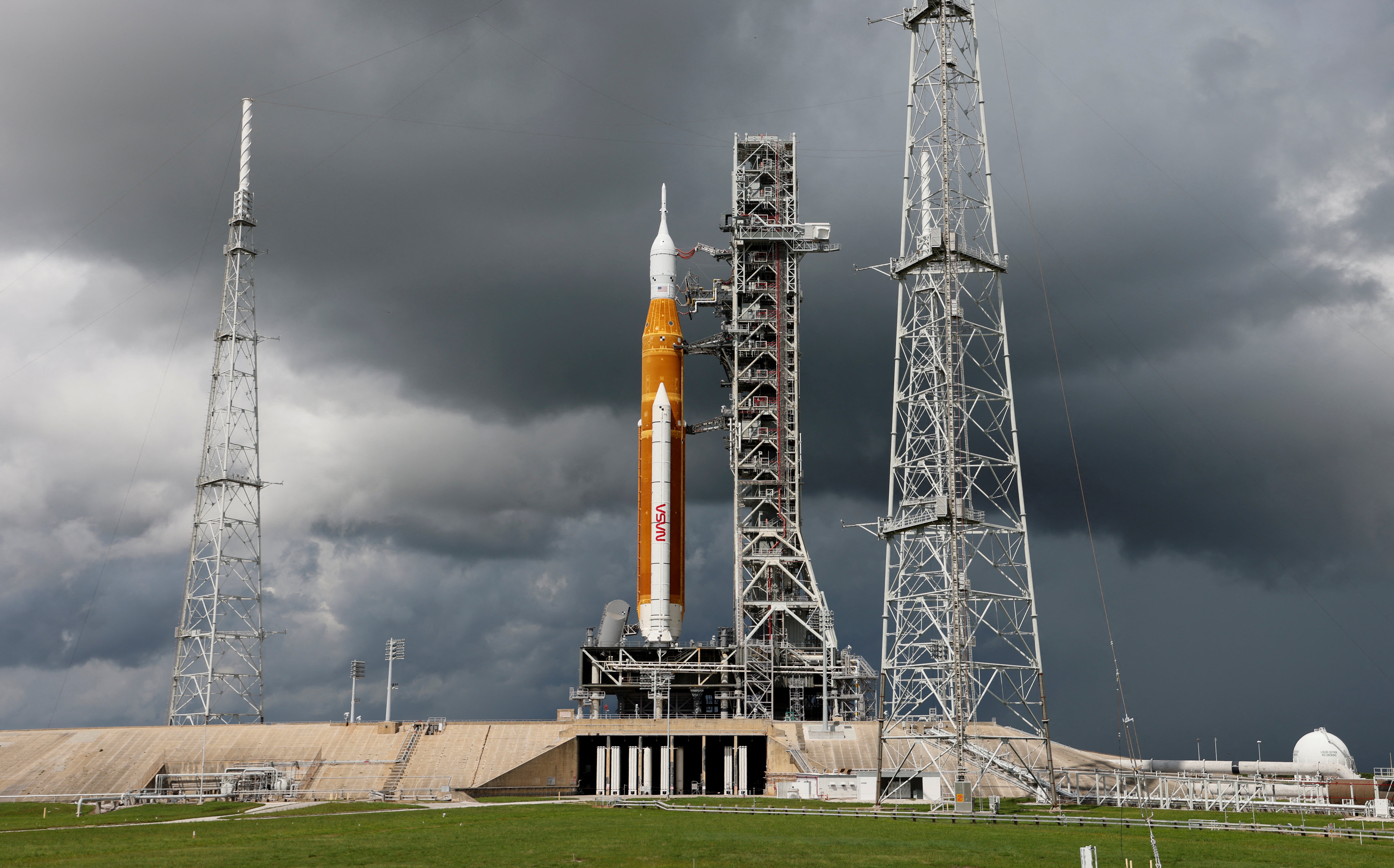What leaks, hurricanes and fires mean for Nasa’s Artemis I moon mission launch date
Facing natural disasters and engineering hurdles, Nasa hopes to catch break and launch new Moon mission sometime in October

As if launching a gigantic Moon rocket for the first time isn’t hard enough on its own, Nasa has faced multiple fuel leaks, engine troubles, and now a building fire and category 4 hurricane in its attempt to get the Artemis I mission launched before the end of the year.
As Nasa’s Space Launch System (SLS) Moon rocket and Orion spacecraft waiting out Hurricane Ian inside the Vehicle Assembly Building — essentially a giant rocket hangar — at Kennedy Space Center in Florida, a launch attempt that had been scheduled for Tuesday could now slip into the middle of October, or even into early November.
Nasa’s Artemis I mission will be the first test flight of the SLS rocket, which will send the solar powered Orion spacecraft on more than month-long journey to, around, and back from the Moon in an uncrewed shake down of the rocket and spacecraft system that Nasa homes will take humans back to the surface of the Moon in 2025.
Nasa first attempted a launch of the rocket on 29 August, but bad weather and engine cooling problems led the space agency to scrub that launch and try again on 3 September. That second attempt was scrubbed due to a hydrogen fuel leak as ground crews tried to fill the SLS rocket with liquid hydrogen propellant.
After making repairs to the rocket, Nasa successfully demonstrated the SLS wouldn’t leak hydrogen in a launchpad test on 21 September — the rocket had remained on launch pad 39B at Kennedy Space Center since the 29 August launch attempt — Nasa hoped to try again on Tuesday.
But Hurricane Ian had other ideas. The big storm made landfall in southern Florida Wednesday afternoon with sustained wind gusts of 155 miles per hour, but Nasa had already made the call to roll the SLS back into its hangar on 26 September to ride out the storm.
Then, on Tuesday, an electrical problem in the mobile platform on which the SLS rests generated a spark that ignited a rope, according to a Nasa blog, leading to an evacuation of the rocket hangar. That fire is still under investigation, according to Nasa and it is not clear if it will have any bearing on when the SLS is ready for another launch attempt.
SLS cannot just launch anytime. In addition to ensuring the launch does not conflict with other Nasa missions, such as the Crew 5 mission that will fly the next crew of astronauts to the International Space Station scheduled to launch on 3 October, the solar power system of the Orion spacecraft further restricts when Artemis I can fly. If launched when the Earth is shadowed by the position of the Moon relative to the Sun, Orion will not be able to transition off battery power in time for a successful mission.
Barring any other delays on the ground due to technical malfunctions, fires, or storms, the next launch window for the Artemis I mission will run from 17 October through 23 October, with opportunities on 27, 29, 30, and 31 October as well. Opportunities in November would begin 12 November, with the first window running through 19 November, according to Nasa’s launch opportunities calendar.
Join our commenting forum
Join thought-provoking conversations, follow other Independent readers and see their replies
Comments